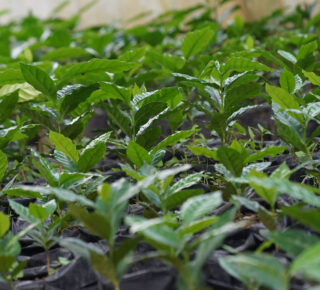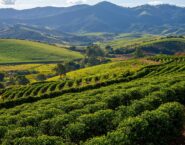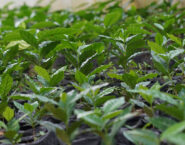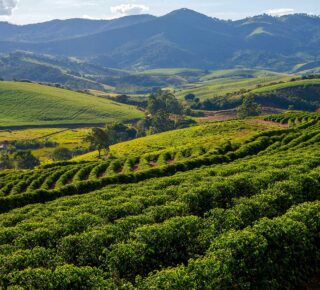
As you savor your favorite coffee, have you ever wondered about its impact on the world around you? On this page, you’ll find insights on how the coffee industry works to support a sustainable future.
Ensuring that farmers can grow the coffee the world needs while protecting natural resources is critical for the environment. It’s also vital for 25 million smallholder farmers—who grow the vast majority of the world’s coffee on farms of about 12 acres or less—and for the millions of jobs supported by coffee here in the United States.
Sippable Fact
An estimated 125 million people around the world depend upon coffee farming for their livelihoods. Coffee is grown and exported from more than 40 countries across Africa, Asia, and the Americas.
The coffee industry has long been a leader in prioritizing sustainability. In the past decade, coffee companies, nonprofits, and government organizations have further stepped up efforts to help coffee farmers thrive, protect natural resources, and overall make coffee more sustainable from seed to cup.
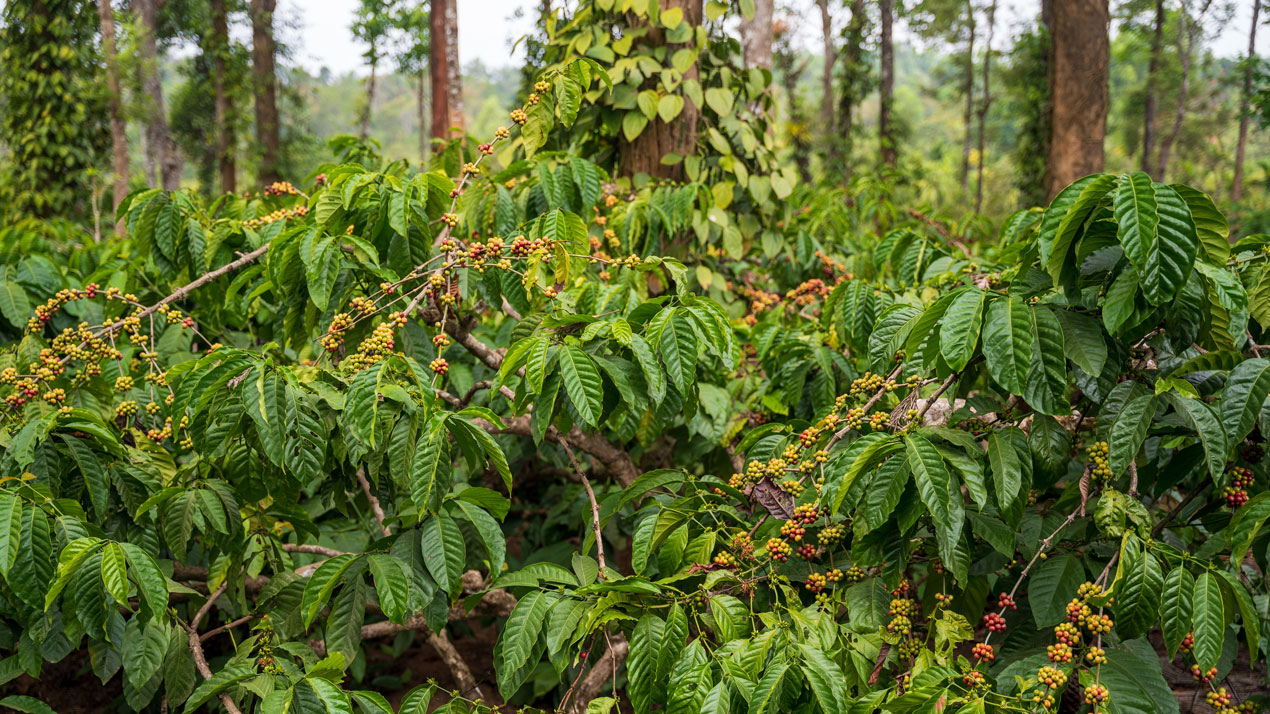
Supporting a sustainable environment
Many people know that drinking coffee is associated with a variety of significant health benefits—but did you know all that coffee goodness starts with a tree?
That’s one way coffee contributes to a sustainable environment. Coffee “beans” are actually the seeds of coffee cherries, or the fruit that grows on coffee trees. Coffee trees take three to four years to mature, bear fruit for decades, and can live for up to 100 years with proper care. Like all trees, coffee trees make a positive impact on the environment by taking carbon dioxide from the air and producing oxygen. As homes for insects, animals, and microorganisms, they also support biodiversity in the broader ecosystem.
In fact, coffee and coffee farmers rely on a healthy environment and are particularly affected by climate change. Changes in temperature, rain, drought, or other disruptions can stress coffee trees, increase pests, and make trees more susceptible to damage. The effects can even damage farms and roads.
Various agricultural practices and initiatives can help coffee farmers sustain coffee for the future. For example, studies1,2,3 have found that growing with a diversity of forest species has multiple benefits, such as:
- Pulling carbon out of the air and into plants and soil
- Preserving animal habitats and increasing biodiversity
- Helping farmers diversify their crops and sources of income
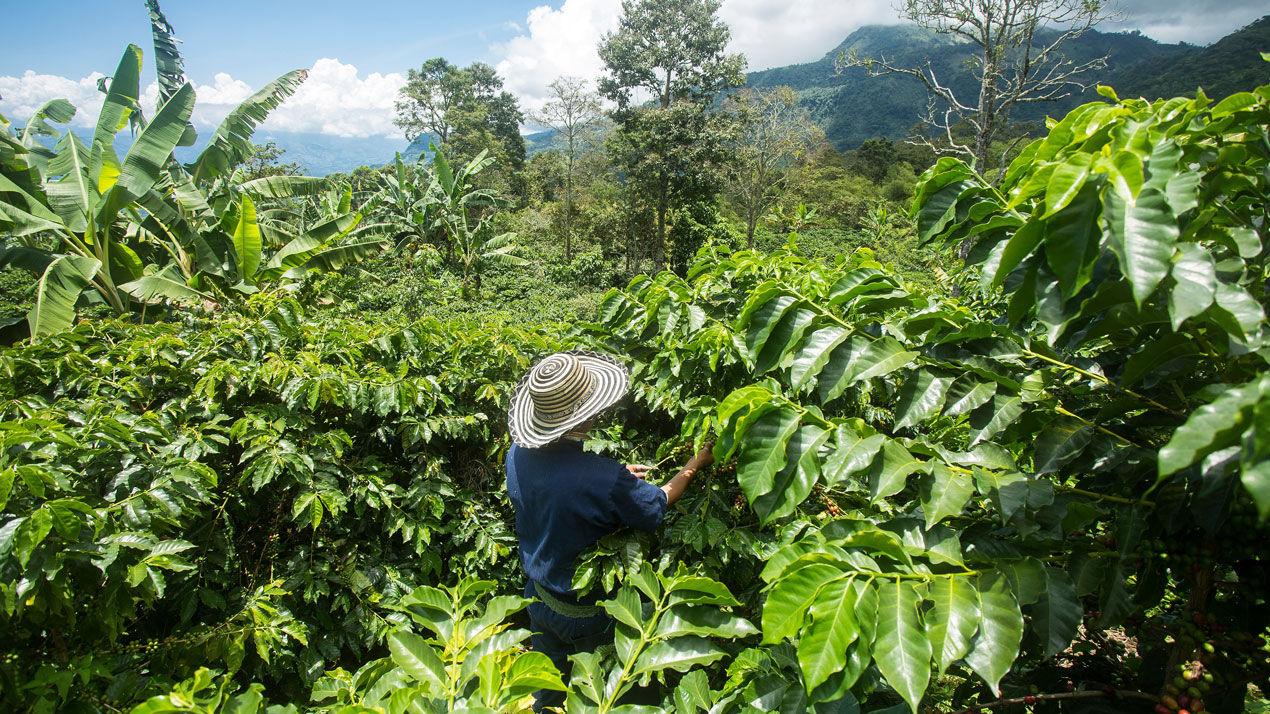
Growing coffee in a changing climate
The majority of coffee is grown by farmers on very small plots of land. Green coffee beans (coffee beans that are unroasted) from these small farms are generally combined in trucks after harvest, then sorted locally by size and quality. Large quantities of beans from different farms are often combined and bagged according to customers’ specifications and exported around the world.
Coffee is often a major source of income for these farmers as well as a major pillar of the economy in countries where it is grown; other crops and economic opportunity may be limited. Coffee trees require specific temperatures and conditions to grow, so climate change can negatively impact trees’ health and farmers’ harvests.
Coffee-growing countries often have limited resources to invest in helping farmers adopt the latest agricultural best practices and address climate challenges. Not all countries globally can provide additional forms of agricultural support, such as crop insurance, that are common in North America and Europe. Other challenges coffee farmers face can include limited infrastructure, lack of access to financing and public services, and even security issues.
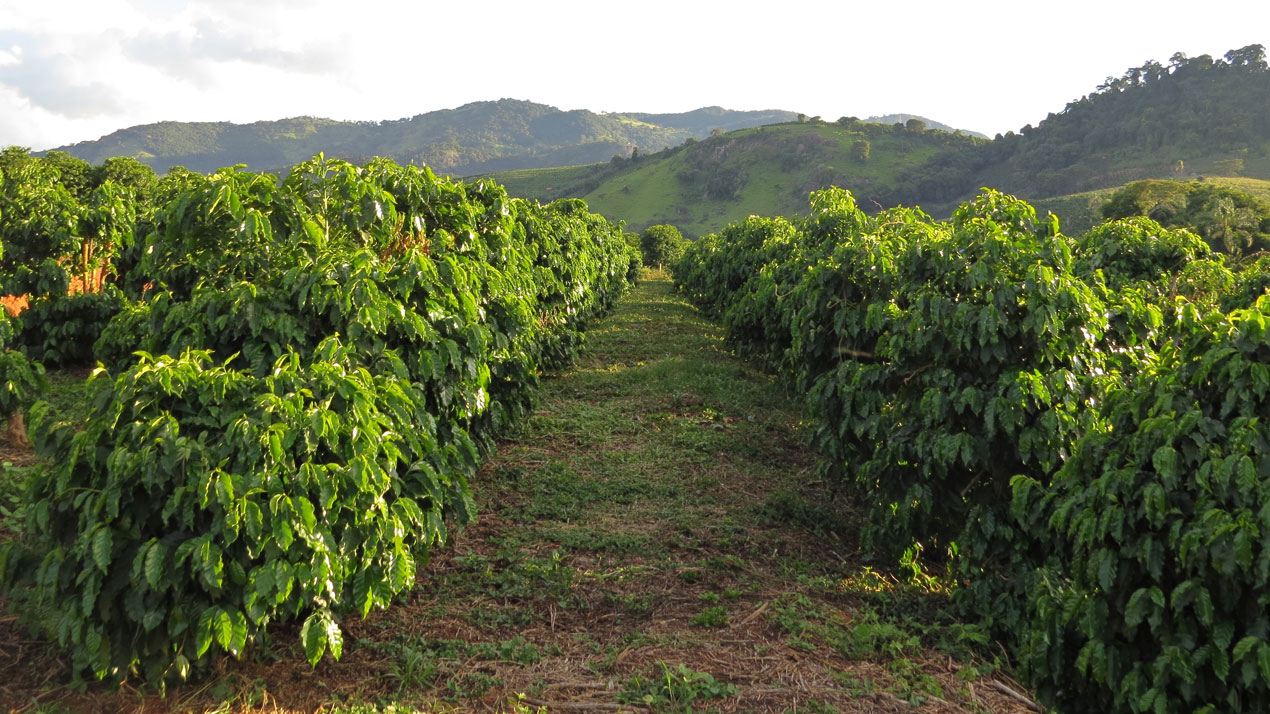
Protecting trees, preventing deforestation
While all tropical crops combined — such as rubber, sugar, coffee, and cacao — are estimated to contribute less than 5% of global deforestation4, the coffee industry is committed to protecting forests and other natural resources.
Coffee grows on trees, and implementation of agricultural best practices can help farmers keep their trees healthy and producing good harvests for decades.
Today, farmers grow coffee more efficiently than ever before. For example, Brazil is the world’s largest coffee producer, and while coffee production has doubled in Brazil since 1986, the land dedicated to coffee farming has decreased by more than 55%.5 Brazil’s coffee-growing states also preserved more than 24.7 million acres of natural vegetation.
Sippable Fact
The Brazil Coffee Platform ensures that more than 245,000 coffee farmers adhere to environmental protections.
The commodities that are most linked to deforestation include cattle, palm oil, pulp and paper, and soy. These commodities tend to be produced by highly industrialized operations, unlike coffee, which is often grown on small, family-owned farms. Farms smaller than 5–12 acres account for an estimated 60% of the global coffee crop, and 80% of coffee farms.6,7 Coffee farmers have a natural incentive to preserve and protect their coffee trees—with diligent care, they can be productive for decades.
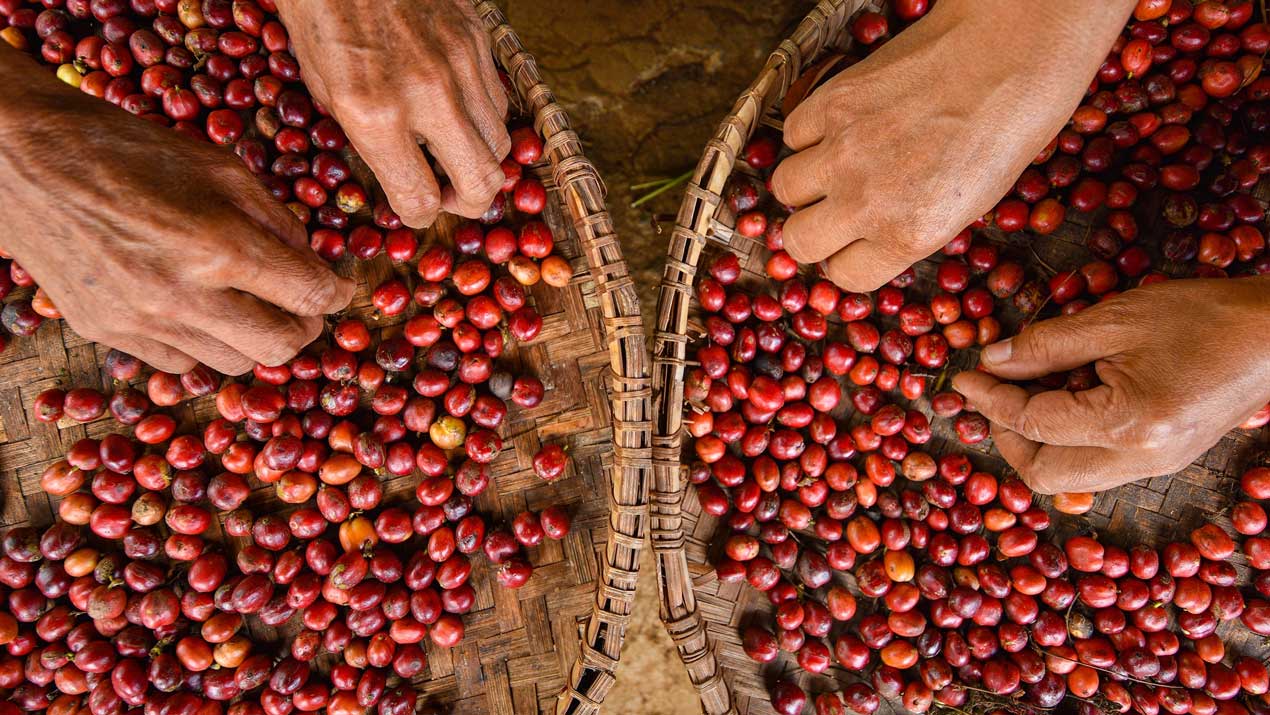
Collaborating on sustainability
The coffee industry has been advancing sustainability for many years, both as individual companies and by working together through a variety of collaborative partnerships and initiatives. Some examples include:
- The Sustainable Coffee Challenge: A collaborative effort through which more than 160 partners align around a common vision to make coffee the world’s first truly sustainable agricultural product and commit to accelerate progress toward their individual and shared goals.
- Global Coffee Platform: A multi-stakeholder membership association that aims to align and multiply member sustainability efforts and investments and grow the global market for sustainable coffee across the coffee world.
- Initiative for Coffee & Climate: A collaborative that aims to create a viable, climate-smart future for coffee families and the coffee industry through a range of aspects include climate-smart agriculture to integrating youth and supporting gender equality.
- World Coffee Research: A nonprofit research organization supported by leading coffee companies that works in 11 countries critical for coffee diversity to dramatically improve coffee productivity, coffee quality, climate resilience, and farmer livelihoods.
Sippable Fact
Your favorite coffee brands may have earned standards and certifications for environmental or sustainability practices, which are awarded by nonprofits and advocacy groups. They may also have their own sustainability initiatives. Check the packaging or visit their website to learn more!
Recognizing coffee’s significant positive impact in the United States, in coffee-growing countries, and around the world, the U.S. and other governments also support coffee farmers. Governmental agencies partner with coffee companies to improve farmer livelihoods, implement agricultural best practices, help coffee become resilient to climate change, protect forests and natural resources, and drive investment in initiatives and innovation to sustain coffee for the future.
Citations
- https://www.ncbi.nlm.nih.gov/pmc/articles/PMC10445845/
- https://www.sciencedirect.com/science/article/pii/S0167880920300438
- https://www.coffeeandscience.org/coffee-and-sustainability/cirad-methodology-review
- https://iopscience.iop.org/article/10.1088/1748-9326/ab0d41
- CECAFÉ Brazilian Coffee Exporters Council, ICO presentation, September 2024
- https://www.frontiersin.org/journals/sustainable-food-systems/articles/10.3389/fsufs.2022.808207/full
- https://www.scienceopen.com/hosted-document?doi=10.13169/jfairtrade.4.2.0002#:~:text=Approximately%2044%25%20of%20the%20world’s,line%20of%20%243.20%20a%20day.

